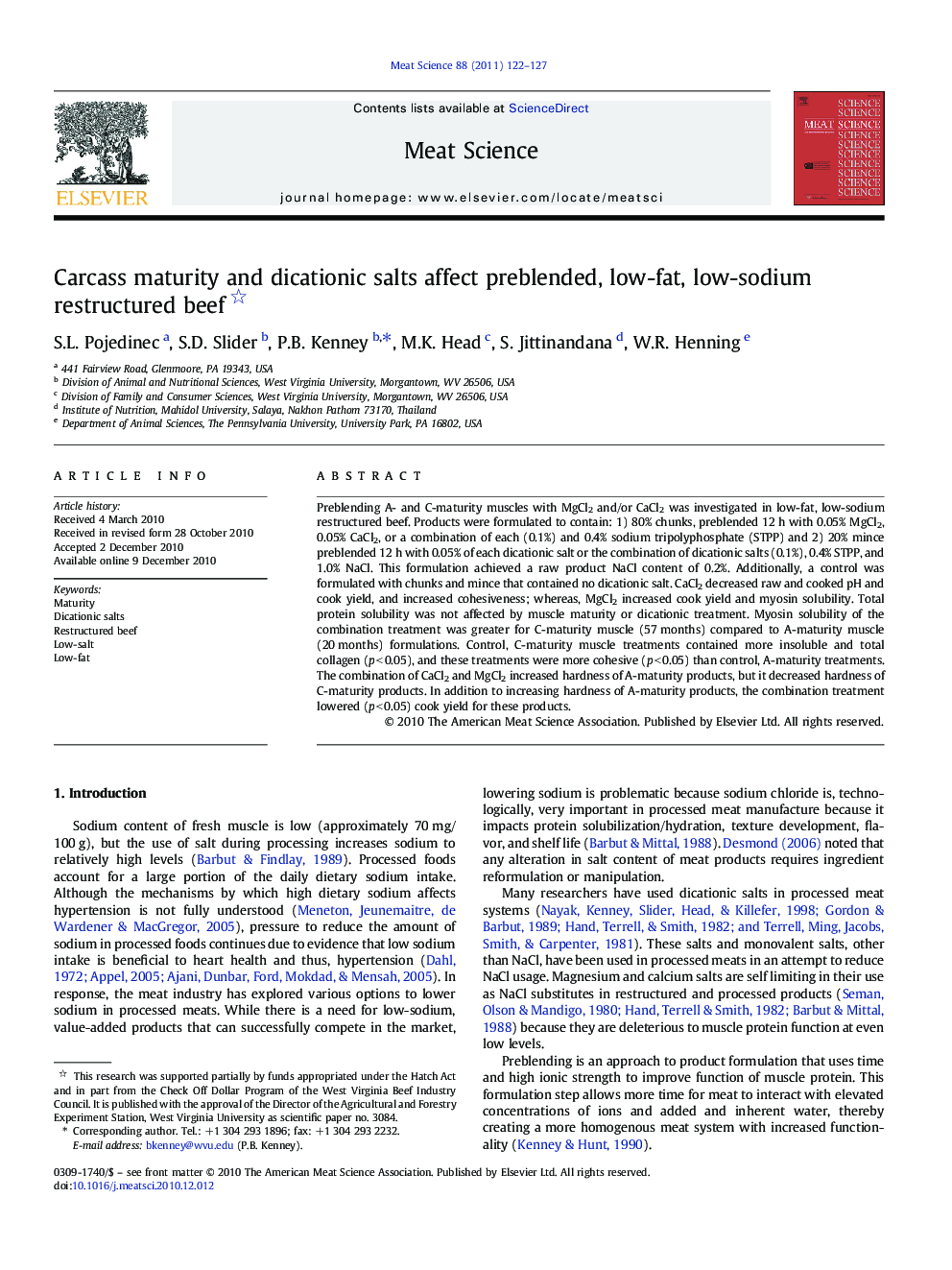| کد مقاله | کد نشریه | سال انتشار | مقاله انگلیسی | نسخه تمام متن |
|---|---|---|---|---|
| 2450465 | 1109652 | 2011 | 6 صفحه PDF | دانلود رایگان |

Preblending A- and C-maturity muscles with MgCl2 and/or CaCl2 was investigated in low-fat, low-sodium restructured beef. Products were formulated to contain: 1) 80% chunks, preblended 12 h with 0.05% MgCl2, 0.05% CaCl2, or a combination of each (0.1%) and 0.4% sodium tripolyphosphate (STPP) and 2) 20% mince preblended 12 h with 0.05% of each dicationic salt or the combination of dicationic salts (0.1%), 0.4% STPP, and 1.0% NaCl. This formulation achieved a raw product NaCl content of 0.2%. Additionally, a control was formulated with chunks and mince that contained no dicationic salt. CaCl2 decreased raw and cooked pH and cook yield, and increased cohesiveness; whereas, MgCl2 increased cook yield and myosin solubility. Total protein solubility was not affected by muscle maturity or dicationic treatment. Myosin solubility of the combination treatment was greater for C-maturity muscle (57 months) compared to A-maturity muscle (20 months) formulations. Control, C-maturity muscle treatments contained more insoluble and total collagen (p < 0.05), and these treatments were more cohesive (p < 0.05) than control, A-maturity treatments. The combination of CaCl2 and MgCl2 increased hardness of A-maturity products, but it decreased hardness of C-maturity products. In addition to increasing hardness of A-maturity products, the combination treatment lowered (p < 0.05) cook yield for these products.
Journal: Meat Science - Volume 88, Issue 1, May 2011, Pages 122–127